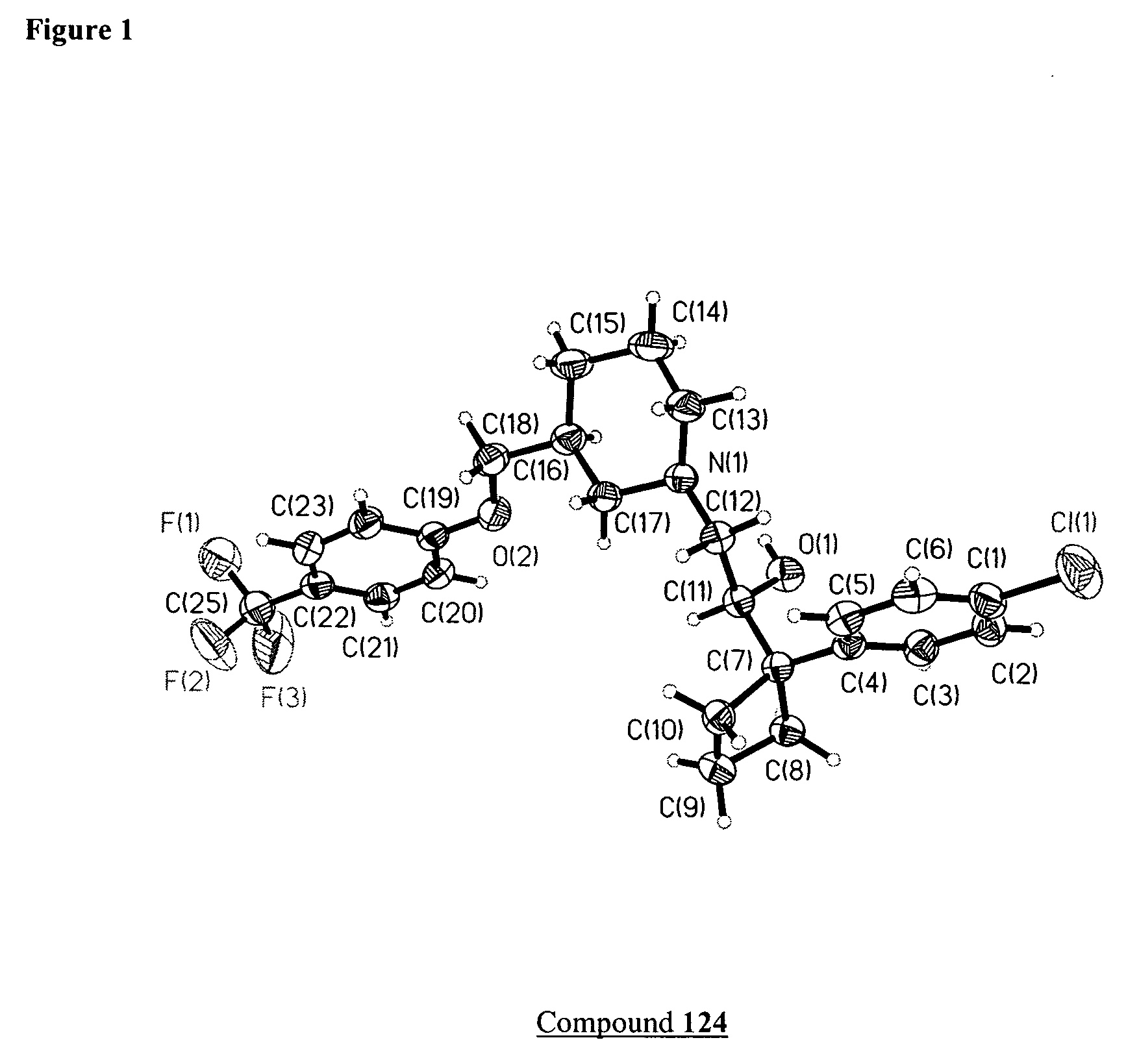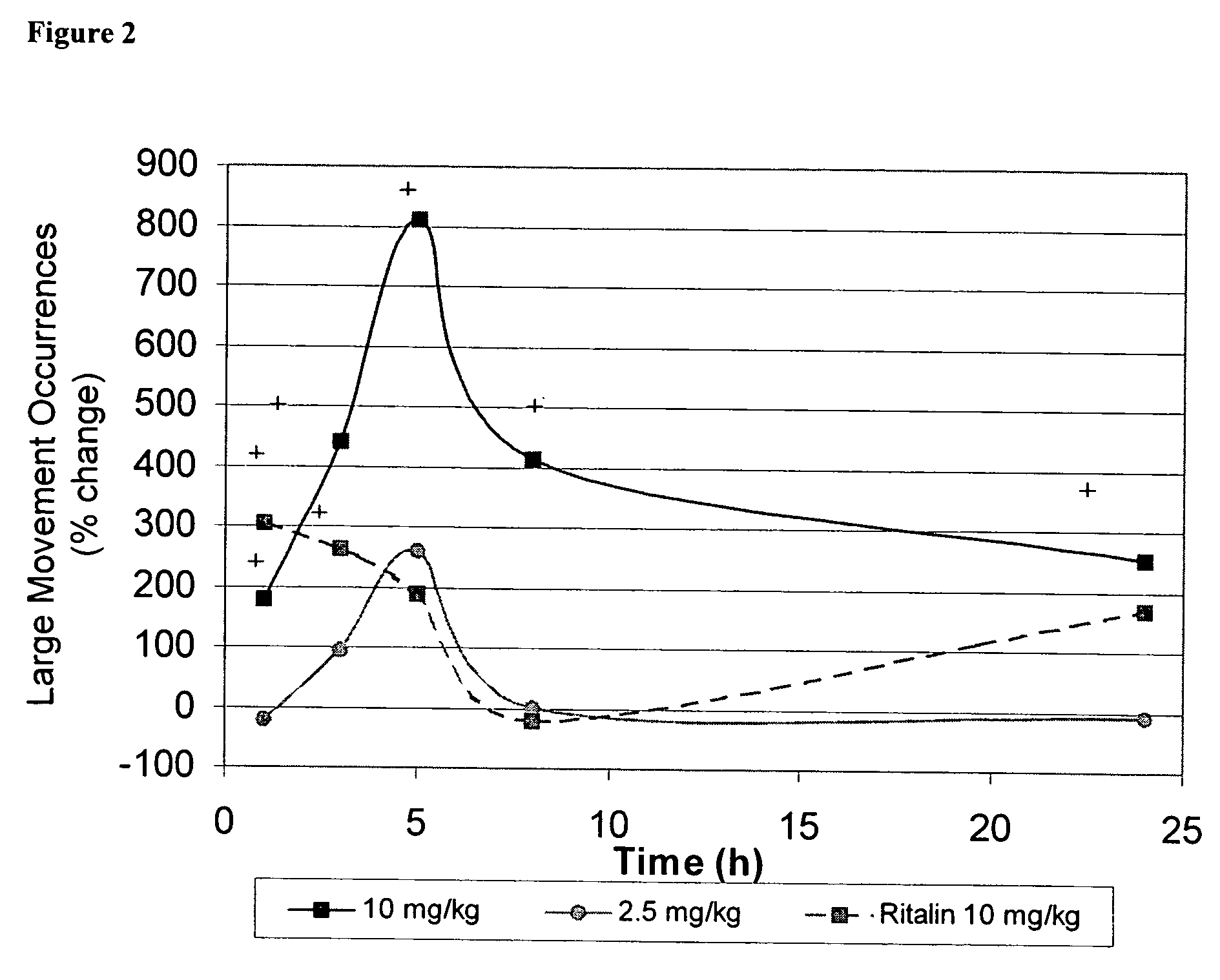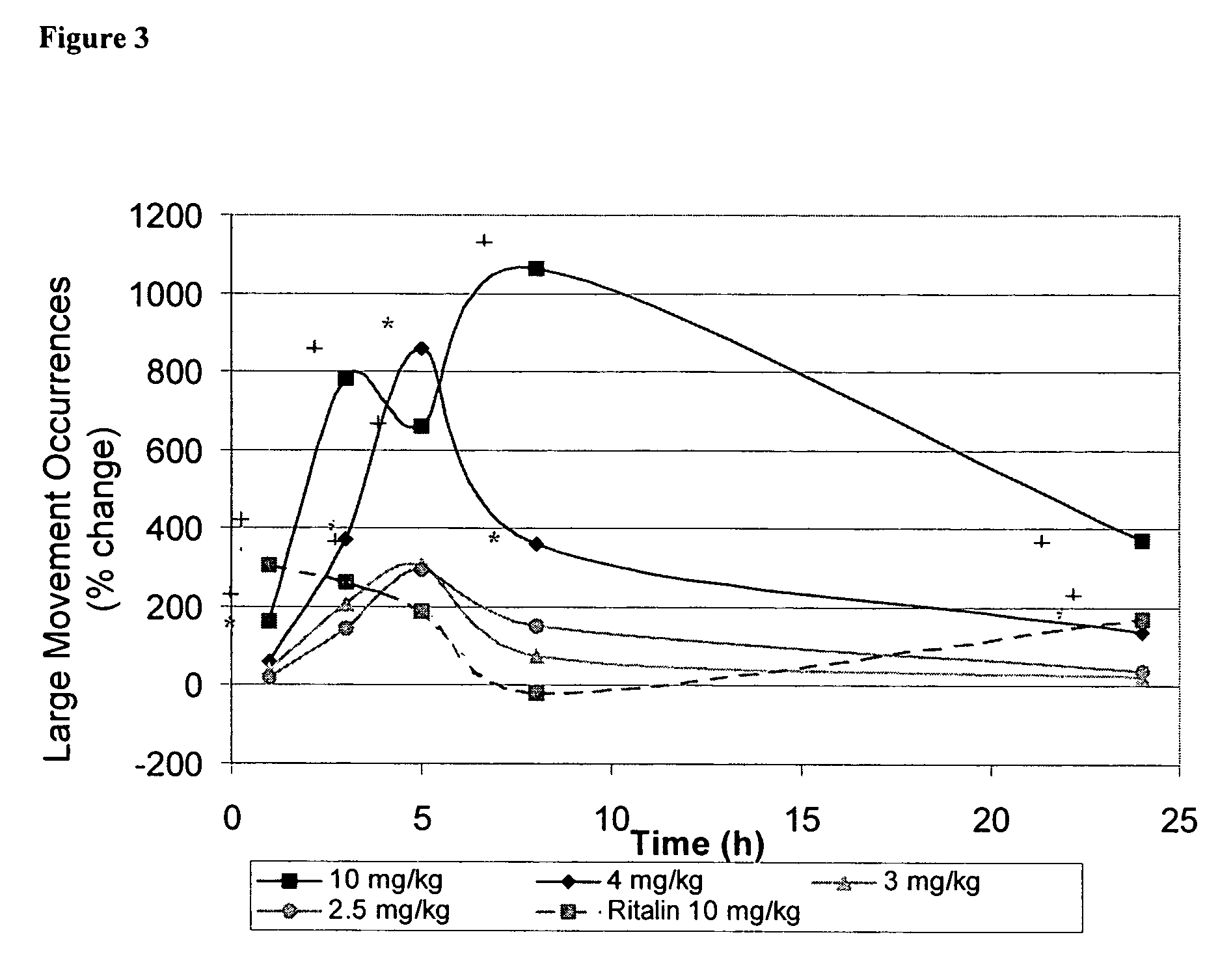Method of treating addiction or dependence using a ligand for a monoamine receptor or transporter
a monoamine receptor and transporter technology, applied in the direction of heterocyclic compound active ingredients, biocide, drug compositions, etc., can solve the problems of addiction or mental illness tampering with the reuptake system, indirect agonists are not very effective in treating the disease, and different results in treating the same diseas
- Summary
- Abstract
- Description
- Claims
- Application Information
AI Technical Summary
Problems solved by technology
Method used
Image
Examples
example 1
Synthesis of [1-(4-chloro-phenyl)-cyclobutyl]-(3-hydroxymethyl piperidin-1yl)-methadone
To a stirred solution of piperidin-3-yl methanol (5.0 g, 0.043 moles) and 1-(4-chlorophenyl)-cyclobutane carboxylic acid (13.58 g, 0.065 moles) in anhydrous dichloromethane (100 mL) was added di-isopropyl ethyl amine (22.47 mL, 0.219 moles) dropwise. After completion of addition solid PyBroP (30.07 g, 0.065 moles) was added to the stirring reaction mixture. The reaction mixture continued stirring at RT for 10h and was quenched with 10% KOH (aq.). The aqueous layer was extracted with EtOAc (3×200 mL). The combined organic layers were dried over Na2SO4 and concentrated to yield an oil. This crude material was purified using silica gel chromatography (4:1 hexane:EtOAc-1:1 hexane EtOAc) to yield 1 as a brown oil (7 g, 0.028 moles, 53%). 1H (CDCl3)δ 7.26 (4H, s), 4.45 (2H, d, J=12.3 Hz), 3.93 (4H, m), 3.4-1.03 (11H, m). LRMS: M+308.
example 2
Synthesis of [1-(4-chloro-phenyl)-cyclobutyl]-(3-hydroxymethyl piperidin-1yl)-methanol
A solution of amide 1 (300 mg, 0.977 mmoles) dissolved in anhydrous toluene (10 mL) was cooled to 0° C. RedAl (691 mg, 3.4 m moles) was added dropwise to the cooled stirring reaction mixture. After completion of addition the reaction continued stirring at RT. After 12h, 10% KOH was added to the reaction mixture. The aqueous layer was extracted with EtOAc (3×5 mL). The combined organic layers were dried over Na2SO4 and concentrated to yield an oil. The crude material was purified using silica gel chromatography (4:1 hexanes:EtOAc-4:1 EtOAc:hexanes) to yield 2 (230 mg, 0.785 mmole, 80%). 1H (CDCl3)δ 7.32-7.12 (4H, m), 3.66-3.47 (2H, m), 2.80-1.28 (17H, m). LRMS: M+293.
example 3
Synthesis of [1-(4-chloro-phenyl)-cyclobutyl]-(3-phenoxymethyl piperidin-1yl)-methadone
A solution of 1 (2.07 g, 6.72 mmoles), triphenylphosphine (2.64 g, 10.08 mmole), and phenol (1.27 g, 13.44 mmoles) dissolved in anhydrous ether (50 mL) was cooled in a brine bath to −5° C. DEAD (1.60 mL, 10.08 mmoles) dissolved in ether (10 mL) was added to the cooled stirring reaction mixture. After completion of addition, the reaction mixture continued stirring at −5° C. After 4h, the reaction mixture was concentrated and crude material was dissolved in a hexane / ethyl acetate mixture (70% hexanes:30% ethyl acetate, 30 mL). Phosphine by-products precipitated and were filtered off. The filtrate was concentrated to yield an oil. This oil was purified using silica gel chromatography (100% hexanes-1:1 hexanes: EtOAc) to yield the amine 3 (840 mg, 2.19 mmole, 32%). LRMS: M+384.
PUM
| Property | Measurement | Unit |
|---|---|---|
| Configuration | aaaaa | aaaaa |
Abstract
Description
Claims
Application Information
 Login to View More
Login to View More - R&D
- Intellectual Property
- Life Sciences
- Materials
- Tech Scout
- Unparalleled Data Quality
- Higher Quality Content
- 60% Fewer Hallucinations
Browse by: Latest US Patents, China's latest patents, Technical Efficacy Thesaurus, Application Domain, Technology Topic, Popular Technical Reports.
© 2025 PatSnap. All rights reserved.Legal|Privacy policy|Modern Slavery Act Transparency Statement|Sitemap|About US| Contact US: help@patsnap.com



